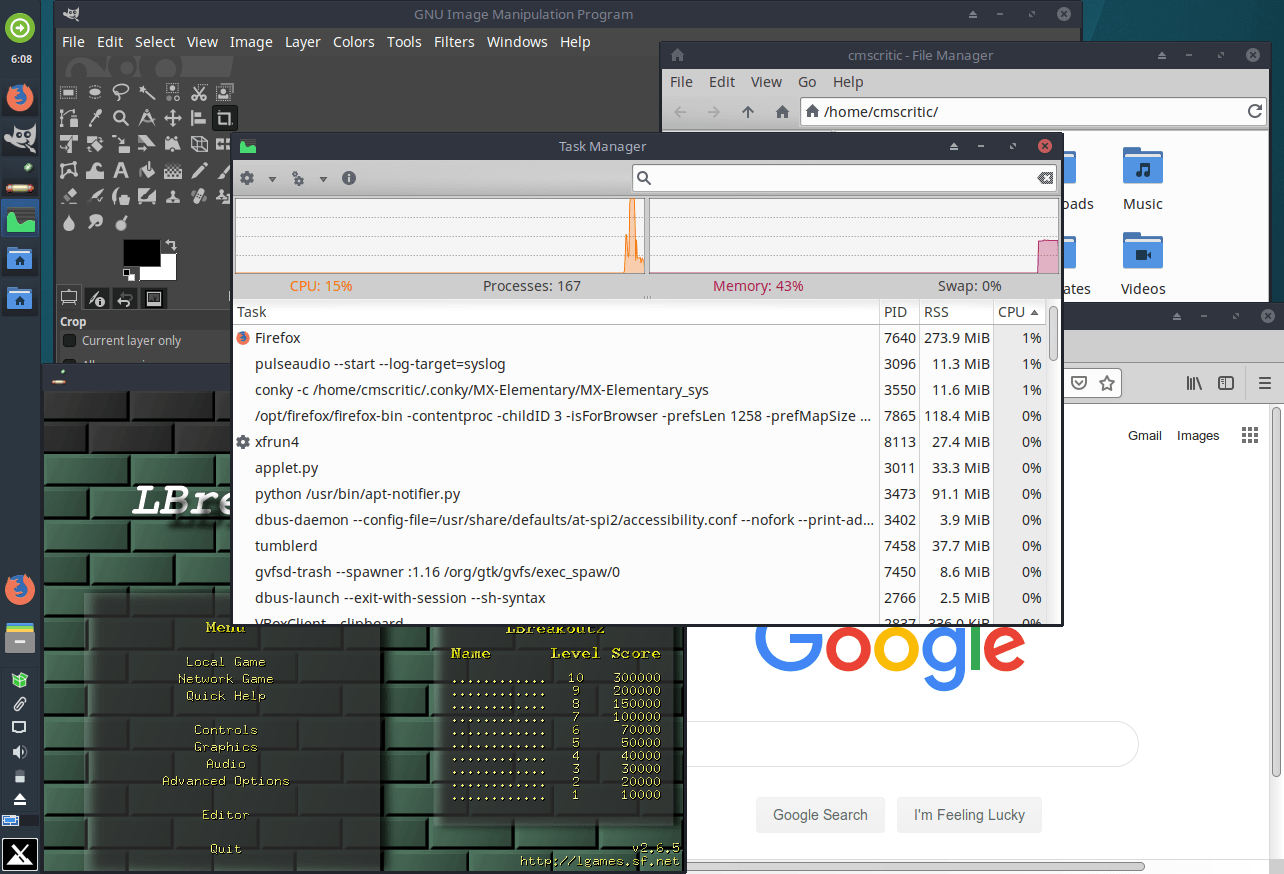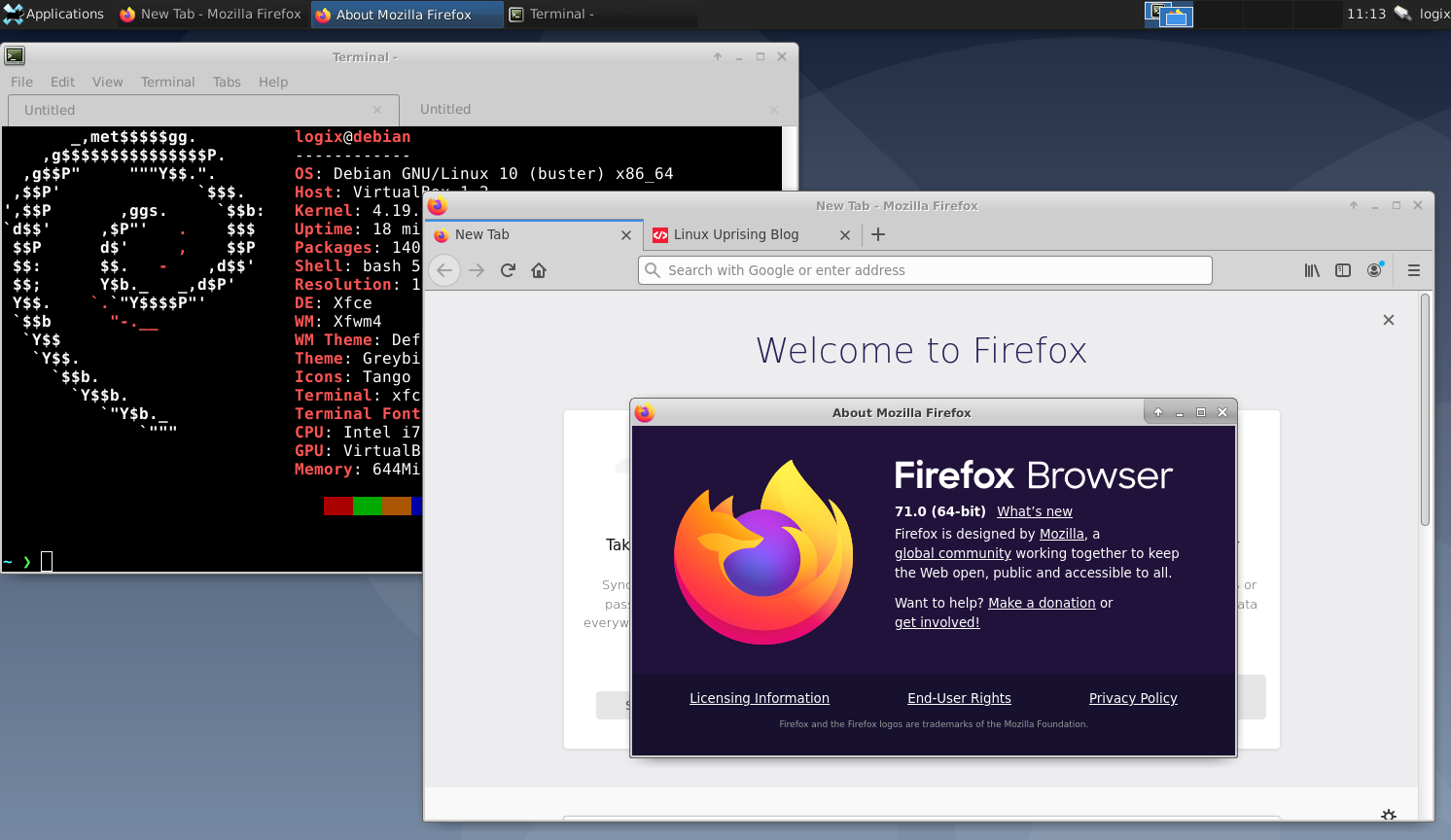Linux
Arch
Just wanted to say that Firefox 76 was released today for Windows and somehow with no intervention by me and before I got the 80.4 CR update the Flatpak Firefox was updated to 76. So your auto update seems to be working at least for Firefox which is really great news, thanks:-).
Flatpak - already installed on Fedora SilverBlue (comes with Firefox with some Fedora specific optimizations) and EndlessOS at least. Follow Quick Setup. This walks you through installing the Flatpak package as well as the Flathub repo. Now you could easily install Firefox with just 'flatpak install firefox' if you want the Stable Firefox. Flatpak をインストールしたら、Firefox Flathub のページに移動 して、 Install ボタンをクリックします。 Flatpak から Firefox をインストールすると、自動的にアップデートされるため、再インストールは必要ありません。 特定のロケールバージョンをダウンロードする.
The AUR has librewolf and librewolf-bin packages. The first one compiles Firefox with our patches from source while the latter provides a binary.
With yay:
Without an AUR helper:
Debian-based
There is a repository available for Debian Unstable, which can be installed using the .deb file found on the Linux releases page, or from the Open Build Service, where there are also instructions for installing the repository manually.
Note: This is for Debian Unstable only - do not try to install this package on any other branch of Debian or Ubuntu/Mint, or you will have errors about being unable to resolve the dependencies.
Gentoo
See the LibreWolf Gentoo repo.
AppImage
The LibreWolf AppImages are found here. Choose the file that matches your system’s architecture (most modern computers use x86_64).
Then run
to make it executable.
Flatpak
Set up Flatpak for your distribution (make sure to enable the flathub repository, as LibreWolf requires several dependencies from there).Then download the LibreWolf Flatpak file from here (choose the file that matches your system’s architecture - most modern computers use x86_64), and install it using
Compiling from source
todo.
macOS
The macOS installation process involves running a script that patches a Firefox disk image to create a LibreWolf disk image. The macOS build process doesn’t build Firefox from source yet, but we may try to do that in the future.
See the LibreWolf macOS repo for more.
Windows
There are currently some experimental builds for Windows, which can be found here.
Note: These builds are experimental - expect bugs!
Firefox is a great web browser. But Mozilla made some poor choices in the last few years with both Firefox and their stances regarding internet privacy and digital rights.
Because of that, some Firefox users are starting to look for alternatives. And one of those alternatives, that gets a lot of attention lately, is LibreWolf – a fork of Firefox focused on privacy, security and freedom.
Basically LibreWolf is an exact clone of the latest up to date Firefox release but it removes all telemetry, anything that phones home either to Mozilla or somebody else ( for example, it removes the Google search engine ) and it is hardened using arkenfox’s user.js and pyllyukko’s user.js. It even comes with uBlock Origin out of the box.
This sounds great. You basically don’t have to mess with any about:config settings and/or user profiles. LibreWolf basically does everything for you. However…
While LibreWolf seems to be a great community-driven project, it just might not be for everyone.
Why? Because:
1. Since it strips out Mozilla’s shenanigans, there’s no sync capabilities. No Pocket either, so… yay! ( and yes, you can always figure out a way to keep LibreWolf in sync across devices, but it’s a lot more work involved and some users either won’t know how to do it, or simply don’t have the time to do it )
Flatpak Firefox Esr
2. There’s no mobile version
3. Out of the box, LibreWolf is hardened to a point where some website are simply unusable. Others will be partially broken. More on that later, and how to fix it.
3.1 This just messes with my OCD and it’s probably just me but, on macOS, LibreWolf’s profile folder is placed next to the Firefox profile folder in ~/Library/Application Support/Firefox/Profiles/
Flatpak Firefox Free
4. There’s no Windows version yet. They’re working on it. Linux is a first class citizen for once. Go figure…
Otherwise, everything else seems to be working just like your Firefox browser. Add-ons work ( however since it stripps all Mozilla stuff, you’ll have to manually go to addons.mozilla.org ), themes work, even userChrome.css works.
But only after you’ve set toolkit.legacyUserProfileCustomizations.stylesheets to true in about:config, just like in any release of Firefox after Firefox 69.
So bottom line is this…

If you’re a Firefox user, and you’re not using a hardened Firefox already, expect some shit not to work the way you’re used to. When something doesn’t work, you’ll have to do a bit of research and get your hands dirty.
Other than that, everything else pretty much just works. So there’s really no reason you shouldn’t give LibreWolf a spin. Maybe use it alongside Firefox and maybe Brave and Tor to compartmentalize your browsing.
HOW TO INSTALL


On Linux you have several options:
- If you’re on Arch Linux ( or derivates ) you can find librewolf or librewolf-bin in the AUR. So use yay or paru to install it with
paru -S librewolf-bin - There’s also a flatpak and AppImage available
- Gentoo users, check this page
On macOS the installation process involves running a script that patches a Firefox disk image to create a LibreWolf disk image.
1. Open the terminal and run git clone --recursive https://gitlab.com/librewolf-community/browser/macos.git
2. cd macos
3. Run ./package.sh to download the latest Firefox and patch it to create the LibreWolf package
4. When it’s done, you’ll notice that there’s a new LibreWolf.dmg package in your macos folder. Type open . to open the path in Finder, double click on LibreWolf.dmg to mount it, and drag-and-drop LibreWolf to your Applications folder.
FIXING NETFLIX, SPOTIFY etc
When it comes to LibreWolf, a major annoyance for most people will probably be the fact that out of the box you can’t use Netflix, Spotify and so on. Why? Because DRM is disabled by default in LibreWolf.
OK, so you can enable DRM in Preferences. Nope! While the option can be found in LibreWolf’s preferences, it’s locked and can’t be changed. You’ll have to mess with LibreWolf’s config file.
However that might not be as easy as you think. Or let’s just say convenient…
1. Linux
If you can find LibreWolf in your distro’s repositories or you complied from source you should find LibreWolf’s config file in /usr/lib/librewolf/librewolf.cfg
If you used the .AppImage, you’ll have to extract the contents, find librewolf.cfgin the Settingsfolder, edit the config file and use appimagetool to regenerate your .AppImage. And you’ll have to do that every single update.
If you’re using the flatpak, I really have no idea how to do it. I’m sure there’s plently of other sources that can show you how to do it. But by now, I’ll asume you’ve lost interest in LibreWolf. Unless you’re looking to compartmentalize.
2. macOS
Go to your Applications folder, right click on LibreWolf and select Show Package Contents
Go to Contents > Resources and there you’ll find librewolf.cfg
Now, once you’ve found your librewolf config file, open it with your favorite text editor and search for drm. Comment out all the settings by adding //in front of every line. Save the file and restart or start LibreWolf.
Now go Preferences and enable DRM

You should now see OpenH264 and Widevine in your plugins. If you don’t, you can force the download by clicking Check for updates under the tools button
You can now play DRM content. Not necessarely a good thing…
